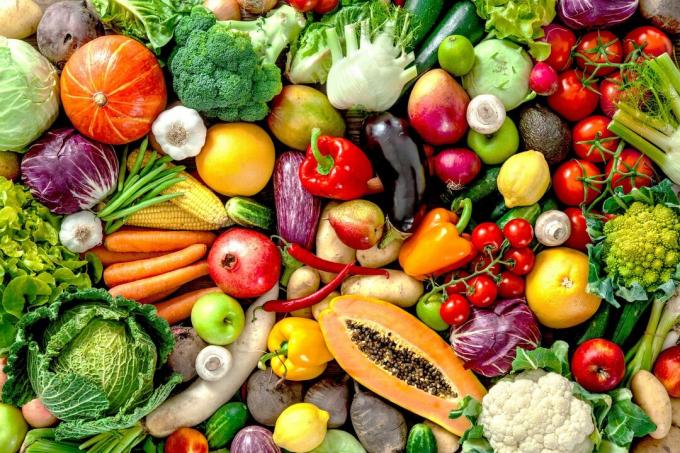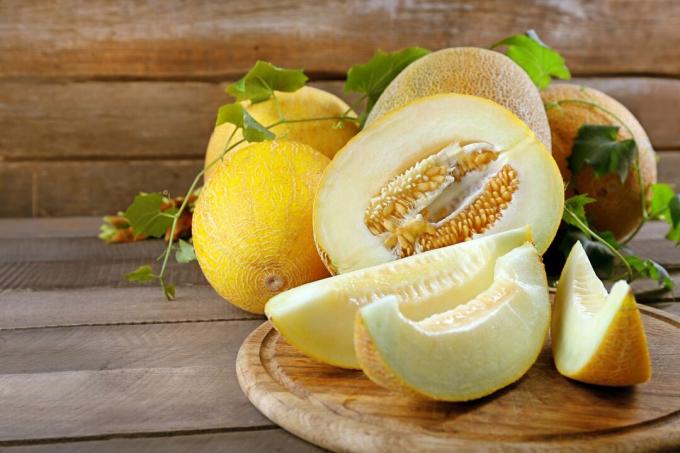Even as children, we learn to separate fruit and vegetables. Here you can find out which criteria are used to differentiate between these two groups.

If we have an apple and a cucumber in front of us, we intuitively divide them into fruit and vegetables. But how do we actually make this difference? The division is culturally determined and includes not only botanical similarities, but also other criteria that we have summarized for you here.
contents
- Botanical subdivision of fruits and vegetables
- Differentiation by use
- The sugar content as an indicator
- Distinction in perennial or annual
- Fruit or vegetables: our conclusion
There are different ways to classify fruit and vegetables. This means what falls under fruit in one division may be vegetable in another. To give you an overview, we have summarized the various subdivisions with examples below.
Botanical subdivision of fruits and vegetables
According to botany, fruit comes from a pollinated flower, i.e. the fruit. This includes all common types of fruit such as
Apple, pear or cherry. Also all fruit vegetables of the cucurbit family, tomatoes, peas, beans and paprika are counted as fruit according to the botanical subdivision. Seedless grapes, pineapple and bananas arise without any fertilization, this process is also known as parthenocarpy or virginity. According to this definition, they do not count as fruit at all. Plants in which the leaves, stems, roots, bulbs or tubers are used are therefore vegetables.
Differentiation by use
There are a few differentiating points when using fruit or vegetables, but they often flow into one another. First of all, fruit is usually eaten raw and vegetables mostly cooked. However, this definition already reaches its limits when it comes to quince, which is inedible in its raw form. In addition, fruit has a pleasant sweet or sour taste when raw, while vegetables are generally flavored with spices. But also a lot of classic vegetables like carrots is eaten raw and has a pleasant taste. Last but not least, fruit is generally prepared sweet, as a mush, casserole or cake. So the question arises, is rhubarb so fruit after all?
The sugar content as an indicator
Fruit is generally perceived as having a sweet taste and consequently more sugar than vegetables. Honeydew melons are therefore also fruit. avocados however, it barely manages to contain 0.2 grams of sugar per 100 grams and would therefore probably be counted as a vegetable. Rhubarb is prepared sweet, but itself has just one gram of sugar per 100 grams. sweetcorn and peas would easily overtake the lemons here. And the inconspicuous Beetroot can even compete with the peach in terms of sugar content. Committing to a specific value hardly makes sense when distinguishing between fruit and vegetables.

Distinction in perennial or annual
The most common classification according to the food definition is based on the lifespan. Fruits include plants that are several years old and bear fruit several times. This traditionally includes all our fruit trees, but also currants, figs and citrus fruits. However, avocado, artichoke, rhubarb and the asparagus under this category, even if sometimes no fruit at all, but sprouts are used. Annual plants like cucumbers, tomatoes, as well as leafy and root vegetables, which can be sown anew every year or harvested only once, are considered vegetables.
Fruit or vegetables: our conclusion
Overall, there is still no clear scientific definition of what exactly counts as fruit or vegetables. In addition, the two groups also have a lot in common; This is probably what makes it so difficult to find an exact classification. It doesn't matter whether it's fruit or vegetables: they all contain many important vitamins, minerals and fiber, which is the most important thing for a healthy diet anyway.
...and receive concentrated plant knowledge and inspiration directly in your e-mail inbox every Sunday!



